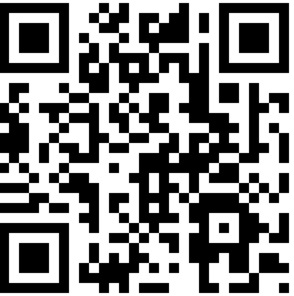By Steve Vargo, OD, MBA 
QR codes are a great marketing tool to link your practice to the mobile communications generation. Consumers scan QR codes with their phones and tablets to link them to online content and savings.
Mobile devices like smartphones and electronic tablets are fast becoming the leading portals to connect with consumers–and with the growing prevalence of QR (Quick Response) codes you have an exciting and effective way to connect your practicewith consumers on-the-go. As mobile devices emerge as primary tools for consumers to learn about goods and services and also to make purchases, QR codes are something you cannot afford to ignore.
10 Ways to Promote your Practice with QRCodes
Appointment cards: Patients can scan code to receive a text appointment reminder.
Web site – scan to receive a discount on your next eye exam.
Facebook page – scan to request an appointment.
Business card – scan to import contact info.
Local newspaper ad – scan to connect to your practice web site.
Discount code – scan to receive a coupon or discount.
Contact lens handout – scan to see an instructional video.
Call us! – scan this code to call us now.
In store – add scan codes to promotional signage (i.e. scan this code to see a video about CRT).
Newsletter – scan this code to upload content-related video.
Access to Great Amounts of Info in Small Spaces
If you’re not yet familiar with QR codes, they’re similar to traditional barcodes but can provide greater amounts of information in the smallest of spaces. Any phone or tablet equipped with a camera and barcode reader can scan a QR code without even needing to download an app. When scanned, QR codes can link to digital content on the web, activate a number of phone functions including e-mail and SMS text, and connect the mobile device to a web browser. Customers download an app and then simply point their phone at the QR code, scan, and immediately the offline experience becomes an online experience. Of course, it’s what happens after the code is scanned that makes QR codes an engaging marketing tool.
Free QR Codes Available Online
Numerous QR code generators are available online. Most are free. You might pay a fee or monthly subscription for advanced features such as high-resolution images for print or putting your logo into the QR code.
Use QR Codes as Appointment Reminders
In our office, we put QR codes on appointment reminders. Patients can scan the code to receive a text alert when they are due for their next exam or when their order has arrived. The system we use is iMobile Communications, a patient communication system that automates the recall process. Patients love the real-time communication, and less reliance on repetitive phone calls improves staff efficiency. By offering automated text reminders for appointments and order arrivals, our staff does not have to make as many phone calls.
Market Your Practice
QR codes can be created for free through numerous online sources, and multiple codes can be generated for different purposes and campaigns. Kreslyn Odum Brooks, OD, of Family Eye Care in Sandersville, Ga., uses QR codes in her office for a 10 percent coupon code, Facebook “like” and a link to her web site. Vanessa Kirby Michel, OD, of Redmond Ridge Eye Care in Redmond, Wash., has one on a sign near her front door that links to her practice web site. Since she is not open on the weekend, this is a way for passers-by to get their office hours, phone number, insurance, etc., without having to “remember” to call on Monday.
QR Code Users Look for Savings
Before you start utilizing QR codes to engage with your patients and customers, it’s important to understand which consumer segments scan QR codes, the source and location of these scans and the information delivered. Half of smartphone owners have scanned QR codes, and 18 percent of them made a purchase after scanning, according to Consumer Pulse.
Over half of smartphone users who were asked why they scanned a QR code said it was to get a coupon or discount, or access additional information, MGH reported, noting that magazines, coupons and product packaging are the most common places to advertise codes. Mobile users who scan a QR code are skewed toward the ages of 18 to 34 (53.4 percent), and more than one of every three scanners have a household income of $100,000 or above, according to comScore. A study by comScore analyzed the source and location of QR code scanning and found that users are most likely to scan codes found in newspapers/magazines and on product packaging and do so while at home or in a store.
Instruct Patients
It’s important to note that many people simply do not know what actions to take when they encounter a QR code. Provide instructions for the technically challenged. While some people will scan a QR code just to see what happens, it’s likely that the novelty factor will soon wear off and we will need to give people a more compelling reason to scan. Add a clear call-to-action and give people something of value for their trouble, like a coupon, discount or valuable information.
Related ROB Articles
Make Your Web Site Mobile-Friendly
Increase Patient Exams with an Easy-to-Use Web Site
Make it Simple to Make an Appointment Online
Steve Vargo, OD, MBA, is president of iMobile Communications, a company that specializes in mobile communication and marketing for doctors. To contact him:svargo@iMobileCommunications.com.






















